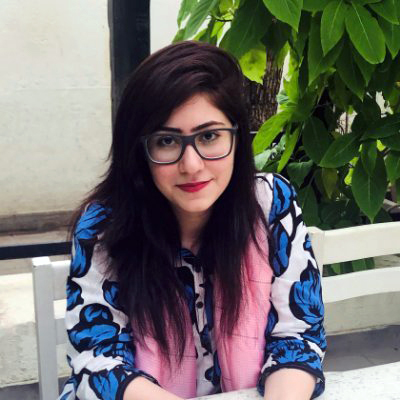- StudySolver
- /The Role Of The Curator Proves
The Role Of The Curator Proves
The role of the curator proves to be a large influence to what viewers see in galleries, museums, and art shows. There are responsibilities that weigh down on the curator may include preserving the art and connecting contemporary work to art history with calculated arrangement of the work. Curators are able to decide how the viewer may experience the exhibition.
Identity politics have played an important role to the individuality of an artist and their work. Notable Contemporary Canadian artists have used their differing backgrounds to individualize their work from other people. Artists who use their culture to create work that criticizes queer identification also
Thesis: The goal of the exhibition is to explore the cultural identity of first and second-generation Canadian artists who identify as only part Canadian, as a strong part of their history is still bound to other cultures; specifically, how their artwork is able to relate to queer politics and representations in art and media.
The exhibit will focus on conversations regarding Canadian queer and transgender artists. Each artist will be given a separate space within the public exhibition. Following Gran Fury’s activism in the 1980’s through advertisement for queer identity and to disempower homophobia, the body of the exhibition will fit a similar scheme. Where the location will take place does not necessarily matter; however, how the exhibition will take place becomes a crucial factor. The point of this exhibition is to open the doors to the public to encourage people to have conversations about the LGBTQ+ community. Whether these conversations have already started matters just as much as how long the exhibition pieces can encourage viewers to keep having these conversations. Matters regarding the lives of people should be treated as more than a political debate.
Gran Fury’s installation in 1987, Let the Record Show is an example of queer empowerment and a stand against political homophobia; furthermore, his installation was a step towards creating a space for art to be able to coexist with activism through his artwork in the following years.
The exhibition will take inspiration from Fury’s 1980’s activism for queer lives. His work for ACTUP was an essential step for the LGBTQ+ community and representation for people of colour.
Conversations about identity using art showcases the struggle and sincerity of the work the artist produces; especially, when that journey is to find self-acceptance. These topics relate to large number of young adults that need justification to find themselves through these artists and their pieces as well.
Canada has a well-diverse group of cultures, as part of its own history; Canadians are built on different backgrounds, only to form a unified individuality under the Canadian identity.
The exhibition will be held within a public space within Calgary; specifically, at the Olympic Plaza on the eve of PRIDE 2018. The exhibition will take place for a week before Calgary’s PRIDE Parade will hit the streets of downtown Calgary. Compared to larger cities within Canada, Calgary does not have as much an LGBTQ scene. Toronto’s streets are filled with queer representation and activity, though in Calgary, these events are quite limited. The representation exists, however scarce.
The Olympic Plaza’s space could be well-utilized as an existing public square; the space is large enough to accommodate a number of viewers who wish to see the exhibition. The space also provides a less formal interaction with art, as opposed to art that is available within galleries and private exhibitions. By allowing using an informal location, the exhibition will be able to open the artwork to a larger population of viewers, people that may or may not be allowed to access galleries due to age restrictions. Calgary’s Olympic Plaza well-located with access to both the Calgary Transit Busses and Train Lines. Overall, the point of this exhibition is to create an artistic space that welcomes people from all bodies of life—this exhibition is a united front against homophobia, transphobia, racism, and sexism.
With the rise of right-winged conservatism within the United States, as a neighbouring country, Canadians are subjected to conservative politics. Over the recent years, there has been a spike in hate-crimes, in the United States, as well as Canada. These crimes are typically against people of colour and the LGBTQ+ community. The point of the exhibition is to reintroduce the world to a community of people that have come together amidst differences and individual journeys to find themselves. Another factor that is a crucial element to the exhibition is the identity that exists across numerous spectrums; some of these artists may have been born-and-raised in Canada, but a part of their identity also exists outside the borders of Canadian land.
“Land and Body of Our Own” will screen Arshad Khan’s award-winning documentary called Abu (2017) as part of the exhibition. Khan is a Pakistani-Canadian filmmaker who immigrated to Canada as a young child. He studied film at Concordia University in Montreal Khan’s production company, Gray Matter Productions, focuses on the in-between gray areas of a seemingly black-and-white world. During his career, he has made a number of short films; however, Abu, marks his debut into the world of directing. The documentary, Abu, is essentially a biography about his life, and the challenges he faces growing up as a gay man in a conservative, Muslim household.
Abu, meaning, “Father” in Urdu, his mother tongue, was made to commemorate the memory of his father’s passing—a person, “whom he deeply loved and deeply resented”. The film showcases his relationship with his family and his own sexuality as he takes viewers through the conservative, traditional values his family follows. According to Khan, Muslim families often regard homosexual relations to be sexual deviants and, these often-brought shame to the family name. These challenges also brought issues of xenophobia to his work; as a young, brown, gay man he struggled to be accepted by his own heritage, but also by his adopted homeland, Canada. Abu is a coming-of-age story told from the perspective of a Muslim-born, gay man—the film expresses “sexuality, immigration, religion, family, trauma, love, racism”—all in favour of a man who wishes to showcase the complexities of a human life. The documentary is an extremely emotional and powerful deliverance of the traumatic experiences Khan had to deal with, especially in terms of homophobia within his culture.
To grow up as a gay man in a Muslim family, brought a weight on his shoulders—in terms of his religion and the bias media has portrayed of his culture—as well as the open homophobia within his own family. The exhibition is meant to introduce, if not start a conversation, regarding queer individuals who live within conservative households. Abu greatly presents viewers with the sincere representation of what it means to struggle to fight two differing identities—as a Muslim man, and a gay man. Abu also ties into the right-winged conservative hate crimes that has seen a spike since ????.

Freelance Writer
I’m a freelance writer with a bachelor’s degree in Journalism from Boston University. My work has been featured in publications like the L.A. Times, U.S. News and World Report, Farther Finance, Teen Vogue, Grammarly, The Startup, Mashable, Insider, Forbes, Writer (formerly Qordoba), MarketWatch, CNBC, and USA Today, among others.


